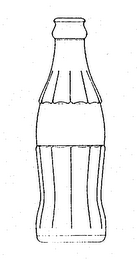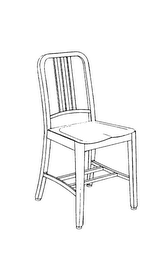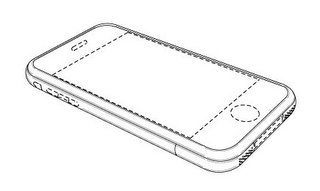
Trade dress recognizes that product/service packaging or the product appearance itself can act as a source identifier in the same manner as more traditional trademarks, like names and logos. In other words, in some circumstances the product packaging or the product appearance can be so uniquely tied to one company or source of goods/services that the packaging or the product appearance indicates to the customer the source of the goods/services. Many times the trade dress of a product allows the consumer to recognize the source of that product from the product packaging or the product appearance alone without any brand or logo appearing with it.
Product and Service Packaging
One example of product packaging trade dress is the classic Coca Cola bottle shape. Coca Cola has a registered trademark (Tm. Reg. No. 1,057,884) over the shape of the classic Coca Cola bottle, as shown at the top of this post. The Coca Cola bottle shape has been used since 1916. Given the unique shape and Coca Cola’s long and exclusive use of this shape for packaging cola, the purchasing public has come to recognize the shape of that bottle as associated with Coca Cola, even if the Coca Cola name is not on the bottle. Product packaging can also cover traditional box package styling. However, aspects of a service “packaging” can also be protected, such as the appearance and decor of a restaurant. This is not an exhaustive list, basically any packaging or “dressing” of a product or service might qualify as trade dress.

Product Design
Trade dress rights can be generated in the design of the product itself, separate from the product packaging. Generally it takes a longer amount of time and/or more marketing efforts to generate trade dress rights in the shape of a product. One, somewhat controversial example of registered product design trade dress is that of the Navy Chair by Emeco Industries (Tm. Reg. No. 2,511,360). The Emeco Navy Chair is an example where a company has had a long period of use of the product shape. Emeco claims to have sold the Navy Chair since 1978.
An other example of product design trade dress is the configuration of the iPhone being rectangular with rounded corners as shown in Tm. Reg. No. 3,457,218 (“the ‘218 registration”). Apple used this design since 2007 and it was registered in 2008. This is a very short time for a product design to achieve trade dress protection. However the Trademark Office was convinced that the shape had become distinctive .

In Apple’s application to register this trade dress, Apple claimed that the extensive media coverage of the launch of the iPhone, including front page coverage on national newspapers and lead stories on TV news broadcasts, amounted to about $400 million in free advertising. Further, Apple claimed 1 million iPhones were sold in the first 74 days after the product was launched. Apple cited leading trademark scholar Thomas McCarthy’s treatise McCarthy on Trademarks for the proposition that no minimum amount of time is necessary for a mark to achieve distinctiveness in the marketplace. Massive TV and print advertising campaign can promote a trademark or trade dress to distinctiveness within a matter of days or weeks in certain circumstances. Currently Microsoft is challenging the validity of this ‘218 registration at the trademark office.

Apple has a second trade dress registration (Tm. Reg. No. 3,470,983, “the ‘983 registration”) that is more narrow in that it includes more elements than is shown in the ‘218 registration. The ‘983 registration includes color and various elements of the iPhone home screen, whereas the ‘218 registration claimed only the exterior shape of the product. In the Apple v. Samsung lawsuit, in response to Questions 12 and 15 of the Verdict form, the jury found that the trade dress of the ‘983 registration was valid and infringed by some of Samsung’s products.
Trade Dress and Patents
Patents traditionally protect product designs. However, in some cases the product design in not patented. In such cases, trade dress rights might be used to prevent copying of the product design. Therefore trade dress rights can sometimes be used as a quasi-substitute for patent protection. In other cases, when a patent exists over the product design at issue, both trade dress and patent rights might be asserted to prevent copying.
Conclusion
The packaging or the product itself can be protected under trademark law if such packaging or product becomes distinctive in the minds of the consumers so that it is associated with a single source (e.g. your company). Often it can take a period of time for such trade dress rights to develop. However, there is no set period of time, and recognition can be achieve in a short time depending on the extent to which customers have been exposed to the trade dress.